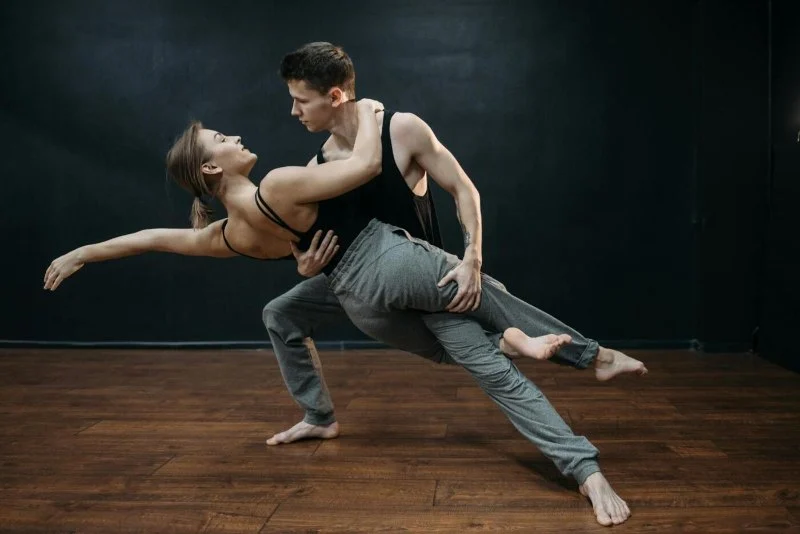
- 1- Introduction to Contemporary Dance and Cultural Influences
- 2- Hip Hop Dance and Its Urban Origins
- 3- Ballet’s Classical Influence on Modern Dance
- 4- The Impact of African Dance on Contemporary Styles
- 5- Jazz Dance and Its Fusion with Popular Culture
- 6- Contemporary Dance’s Connection to Contemporary Music
- 7- Breakdancing: Origins in Street Culture
- 8- The Influence of Latin Dance Styles on Modern Dance
- 9- Vogueing: The Ballroom Scene and LGBTQ+ Culture
- 10- The Evolution of Contemporary Dance in Film and Media
- 11- How to Learn and Incorporate Contemporary Dance Moves
1- Introduction to Contemporary Dance and Cultural Influences
Contemporary dance is a diverse and evolving art form that draws from various cultural influences, combining elements of ballet, modern dance, jazz, and street dance. Over time, contemporary dance has adapted and fused traditional movement with new styles, creating dynamic performances that resonate with today’s audience. Understanding the cultural origins of these movements provides insight into how dance reflects societal shifts and individual expressions.
In this article, we’ll explore the top 10 contemporary dance moves and their cultural roots, from the urban streets to the world stage, and examine how these movements have shaped modern dance.
2- Hip Hop Dance and Its Urban Origins
One of the most influential styles in contemporary dance is hip hop. Originating in the 1970s in the Bronx, New York, hip hop dance emerged from the African American and Latino communities, influenced by the beats of rap music and urban street culture. Moves like the wave, pop-and-lock, and breakdancing (or b-boying) are key elements of hip hop.
The raw, energetic nature of hip hop dance speaks to the power of self-expression and social commentary, often reflecting the struggles and aspirations of the urban youth culture. Over time, hip hop has evolved, incorporating elements from other dance styles and spreading globally.
3- Ballet’s Classical Influence on Modern Dance
While contemporary dance has moved away from classical ballet, the latter’s influence is undeniable. Ballet introduced structure, form, and technical precision to dance that laid the foundation for modern and contemporary styles. Ballet’s verticality, pointe work, and formal training systems set a high standard for physicality and artistry in dance.
Modern dance pioneers like Martha Graham and Merce Cunningham took ballet’s rigorous technique and adapted it into more expressive and freeform styles, making it the backbone for many contemporary dance moves.
4- The Impact of African Dance on Contemporary Styles
African dance traditions, with their rhythmic, grounded, and expressive movements, have had a significant impact on contemporary dance. African-American dance, which incorporates these rhythms and body movements, is deeply rooted in cultural identity and storytelling.
The influence of African dance is evident in styles like hip hop, jazz, and even modern contemporary dance, where the emphasis on movement from the hips, torso, and lower body is central. The fluidity and grace of African dance have paved the way for contemporary performances that celebrate the freedom of expression and emotional depth.
5- Jazz Dance and Its Fusion with Popular Culture
Jazz dance is another crucial element in contemporary dance. Emerging in the early 20th century, jazz dance developed alongside the jazz music genre, and its energetic, improvisational style reflected the cultural shifts of the era. As jazz music became more popular, so did jazz dance, which later evolved into Broadway-style dance.
Modern jazz dance continues to influence contemporary movements with its rhythmic, syncopated patterns, often blending classical techniques with more contemporary, street-inspired movements. It remains a popular style, seen in everything from musicals to music videos.
6- Contemporary Dance’s Connection to Contemporary Music
One of the defining characteristics of contemporary dance is its close relationship with contemporary music. Dance and music are deeply intertwined, with modern choreographers often selecting music that complements or enhances the emotional impact of the movement.
Artists like Pina Bausch and Alvin Ailey have used contemporary music to inform their choreographic decisions, blending jazz, pop, electronic, and classical music with innovative movement. This fusion of sound and motion results in performances that speak directly to the audience, both emotionally and visually.
7- Breakdancing: Origins in Street Culture
Breakdancing, or b-boying, is another important element in contemporary dance that has its roots in street culture. Developed by African American and Puerto Rican youth in the 1970s and 1980s, breakdancing was part of the larger hip hop movement.
The athleticism of breakdancing, characterized by power moves, freezes, and footwork, continues to influence contemporary dance performances and competitions. It’s known for its creative and often acrobatic moves, which tell a story through powerful physicality and improvisation.
8- The Influence of Latin Dance Styles on Modern Dance
Latin dance styles, including salsa, mambo, and tango, have also contributed significantly to contemporary dance. Known for their passionate, expressive movements and rhythmic energy, Latin dances have influenced modern dance techniques and performances across the globe.
The incorporation of Latin dance into contemporary performances has resulted in vibrant, fast-paced choreography that emphasizes sensuality and connection with the audience. Popularized through films, television, and dance competitions, Latin styles continue to inspire contemporary dancers.
9- Vogueing: The Ballroom Scene and LGBTQ+ Culture
Vogueing emerged from the Harlem ballroom scene in the 1980s, where LGBTQ+ communities created an artistic form of self-expression. This highly stylized dance, characterized by angular poses, dramatic movements, and improvisation, became a cultural phenomenon thanks to Madonna’s “Vogue” and the ballroom documentary “Paris Is Burning.”
Vogueing has now become a significant influence in contemporary dance, with its exaggerated, fierce poses and fluid movements often appearing in dance performances and music videos. It represents both individuality and community, celebrating freedom, identity, and self-expression.
10- The Evolution of Contemporary Dance in Film and Media
Contemporary dance has also made its mark in film and media. Iconic dance scenes in movies like "Step Up," "Flashdance," and "Dirty Dancing" have brought various dance styles, including hip hop, jazz, and contemporary, into the mainstream. These performances have shaped public perception of contemporary dance and inspired a new generation of dancers.
The fusion of contemporary dance with film and media continues to evolve, with choreographers using dance as a tool for storytelling, emotion, and entertainment. As new styles emerge, dance is constantly being redefined and reimagined in ways that appeal to modern audiences.
11- How to Learn and Incorporate Contemporary Dance Moves
If you’re inspired by the top contemporary dance moves we’ve discussed, here’s how you can get started:
- Take Classes: Enroll in classes at a reputable dance school, like the American Dance Academy, where you can learn various contemporary styles from trained instructors.
- Watch Tutorials: There are plenty of online tutorials available on platforms like YouTube, where dancers can break down popular contemporary moves.
- Practice Consistently: Like any art form, practice is key. Dedicate time to honing your skills, whether it’s through self-practice or participating in group sessions.
- Stay Inspired: Watch live performances, attend dance battles, or follow contemporary dance choreographers on social media to stay inspired and keep evolving your style.
Contemporary dance is an art form that continues to push boundaries and evolve. By understanding the cultural origins of these iconic movements, dancers can better appreciate the rich history and significance behind each style, while continuing to innovate and express themselves in unique ways.
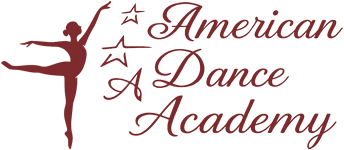
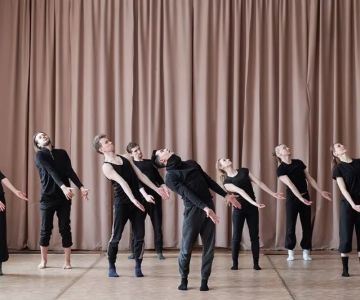
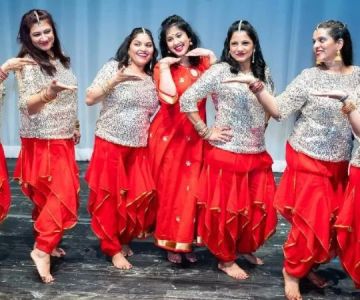
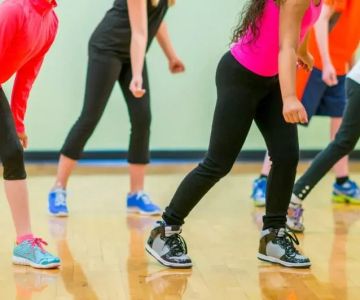


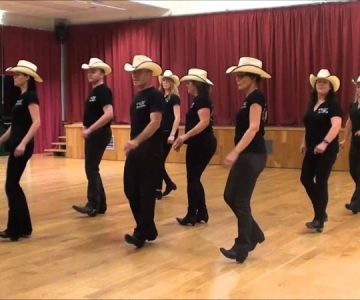
 Wilson Dance Studio4.0 (25 reviews)
Wilson Dance Studio4.0 (25 reviews) Aaja Nachle Dance Studio5.0 (20 reviews)
Aaja Nachle Dance Studio5.0 (20 reviews) Ballet des Amériques Conservatory4.0 (34 reviews)
Ballet des Amériques Conservatory4.0 (34 reviews) DANCE! By Debra DiNote4.0 (47 reviews)
DANCE! By Debra DiNote4.0 (47 reviews) Marble City Ballroom5.0 (33 reviews)
Marble City Ballroom5.0 (33 reviews) Cumbe: Center for African and Diaspora Dance4.0 (72 reviews)
Cumbe: Center for African and Diaspora Dance4.0 (72 reviews) K-Pop Dance Cultural Origins – What You Need to Know | American Dance Academy
K-Pop Dance Cultural Origins – What You Need to Know | American Dance Academy Top 10 Contemporary Dance Moves and Their Cultural Origins
Top 10 Contemporary Dance Moves and Their Cultural Origins Filming at Kaufman School of Dance USC: Permissions, Policies, and Tips
Filming at Kaufman School of Dance USC: Permissions, Policies, and Tips Why Dance Schooling Matters: The Deeper Benefits of a Dance Education
Why Dance Schooling Matters: The Deeper Benefits of a Dance Education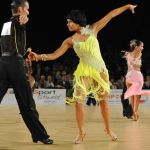 Ballroom Dance to Burn Calories – Effective Tips and Dance Styles
Ballroom Dance to Burn Calories – Effective Tips and Dance Styles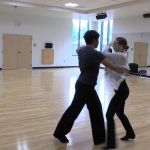 Top 10 Samba Moves for an Effective Fitness Routine
Top 10 Samba Moves for an Effective Fitness Routine